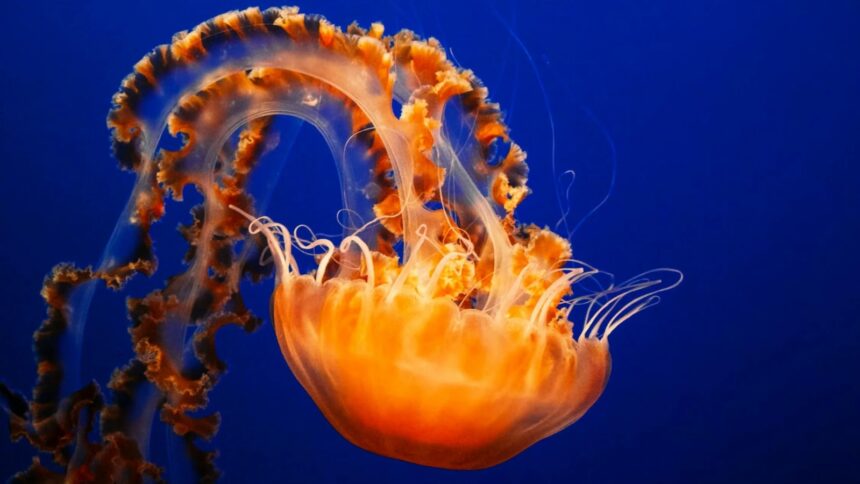Humans rely on their brain for everything. It is essential for survival for most living creatures. Surprisingly, some animals do not have brains. But how do they survive? They certainly do not function like humans. They have different challenges in life and have evolved using their own unique adaptations. They rely on basic biological traits for their survival. Here are 6 animals that function without a brain:
Caribbean Box Jellyfish are mostly found in the Carribean Sea. Even though they lack a central and only have a few thousand neurons grouped near their eyes, they are still enthusiastic learners, according to BBC.
As per BBC’s websites, a 2023 study found that these brainless creatures are capable of associative learning. In this instance, they managed to learn how to steer clear of objects during a laboratory experiment, rapidly modifying their behavior in response to new information.
Beadlet Anemone are commonly found in rock pools across the word. This ruby-red and tentacled is brainless. A research project conducted at the University of Nottingham found out that their behavioral adaptability, specifically how their actions can shift in reaction to various stimuli and discovered that they can modify their aggression levels towards other anemones depending on how familiar or related they are.
Brittle stars are closely related to starfish. According to BBC, they are brainless creatures having only a nerve ring and nerve cords in their five arms. There is no central processing centre, and each of the nerve cords can act independently of each other.
Sea squirts are simple creatures who live their lives fixed to a rock. According to BBC, they consume food by taking in water in one end, taking it out from the other side thus traps tiny food particles.
Slime moulds are neither fungus, animals or plant. These are single-celled gelatinous creatures who have the ability to solve mazes, remember foraging routes, make decisions and anticipate change while being brainless, according to BBC.
Sea urchins are simple creatures who show some remarkable behaviours. For instance, this prevalent type of urchin is recognized for its behavior of gathering loose items from the ocean bottom such as shells, stones, seagrass, and even plastic and using them as a form of protection.








